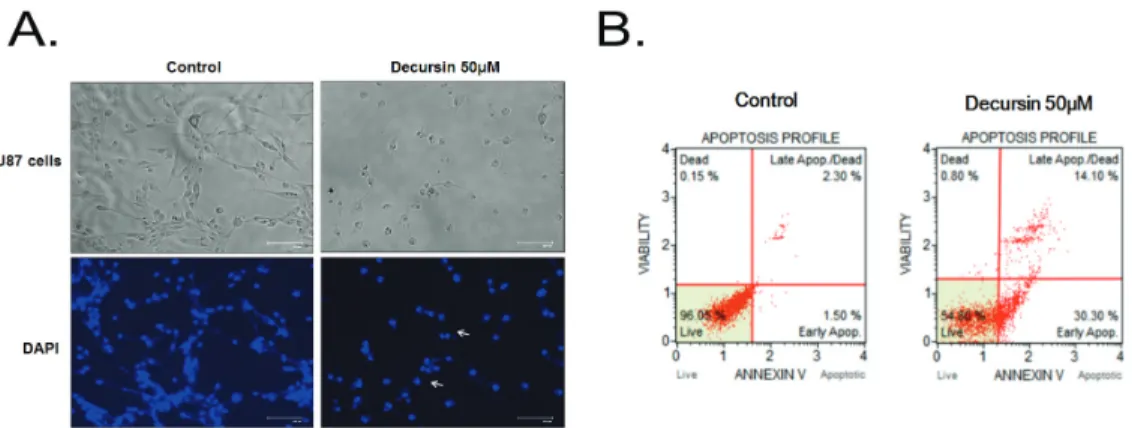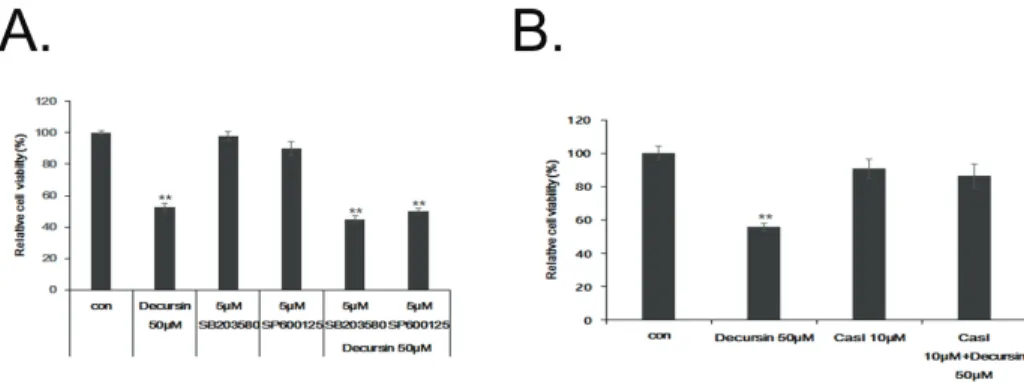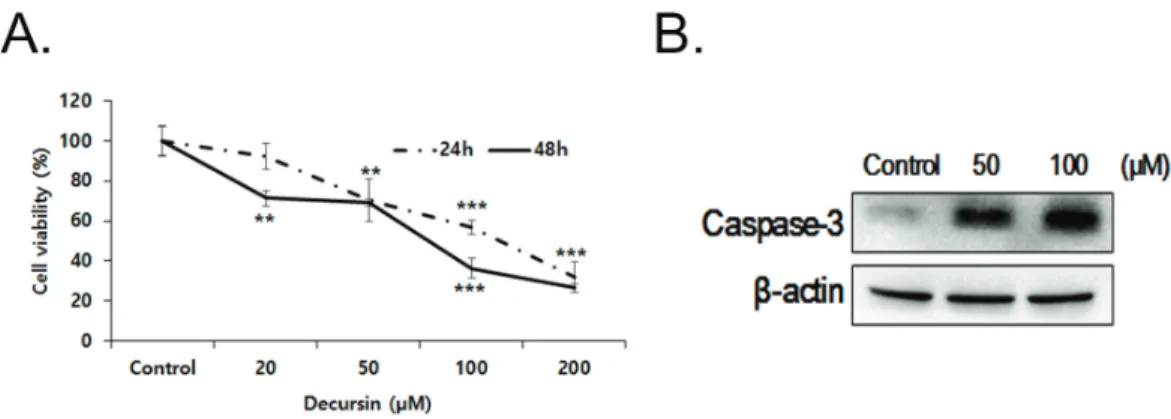Author contributions: S.T.O. and S.M.L. carried out cell experiments and western blotting and C.H. carried out primary glial cell culture. B.S.K., S.C.P.
and D.I.K. wrote the draft manuscript. S.H.J. and B.A.S. organized the study.
This is an Open Access article distributed under the terms of the Creative Commons Attribution Non-Commercial License, which permits unrestricted non-commercial use, distribution, and reproduction in any medium, provided the original work is properly cited.
Copyright © Korean J Physiol Pharmacol, pISSN 1226-4512, eISSN 2093-3827
INTRODUCTION
Angelica gigas (Dang Gui) is a monocarpic biennial plant from China, Korea and Japan, and is used in traditional herbal medicine. It inhabits forests, grasslands and banks of streams.
The dried roots are used in the treatment of female reproductive health issues such as dysmenorrhea, amenorrhea and menopausal syndromes by enhancing blood circulation and new blood syn- thesis [1].
Decursin, a coumarin derivative, is one of major constituents of this plant [2] and has been reported to inhibit the growth and
survival of some metastatic prostatic cancer cells [3,4]. However, there have been no studies conducted on the use of decursin for the prevention or treatment of brain tumors. The most common primary central nervous system tumor, glioblastoma, represents about 30% of all brain tumors and 80% of all malignant tumors.
It can be categorized into four grades (I to IV), where grades I and II reflect low-grade gliomas with grades III and IV (glioblastoma) being high-grade gliomas. Nearly 60% of high-grade gliomas are glioblastoma, and the incidence rate for these tumors is approxi- mately 3 per 100,000 [5]. The current clinically used treatment strategies for glioblastoma include surgery followed by concurrent
Original Article
Decursin induces apoptosis in glioblastoma cells, but not in glial cells via a mitochondria-related caspase pathway
Seung Tack Oh 1 , Seongmi Lee 2 , Cai Hua 3 , Byung-Soo Koo 4 , Sok Cheon Pak 5 , Dong-Il-Kim 6, *, Songhee Jeon 3, *, and Boo Ahn Shin 7, *
1


